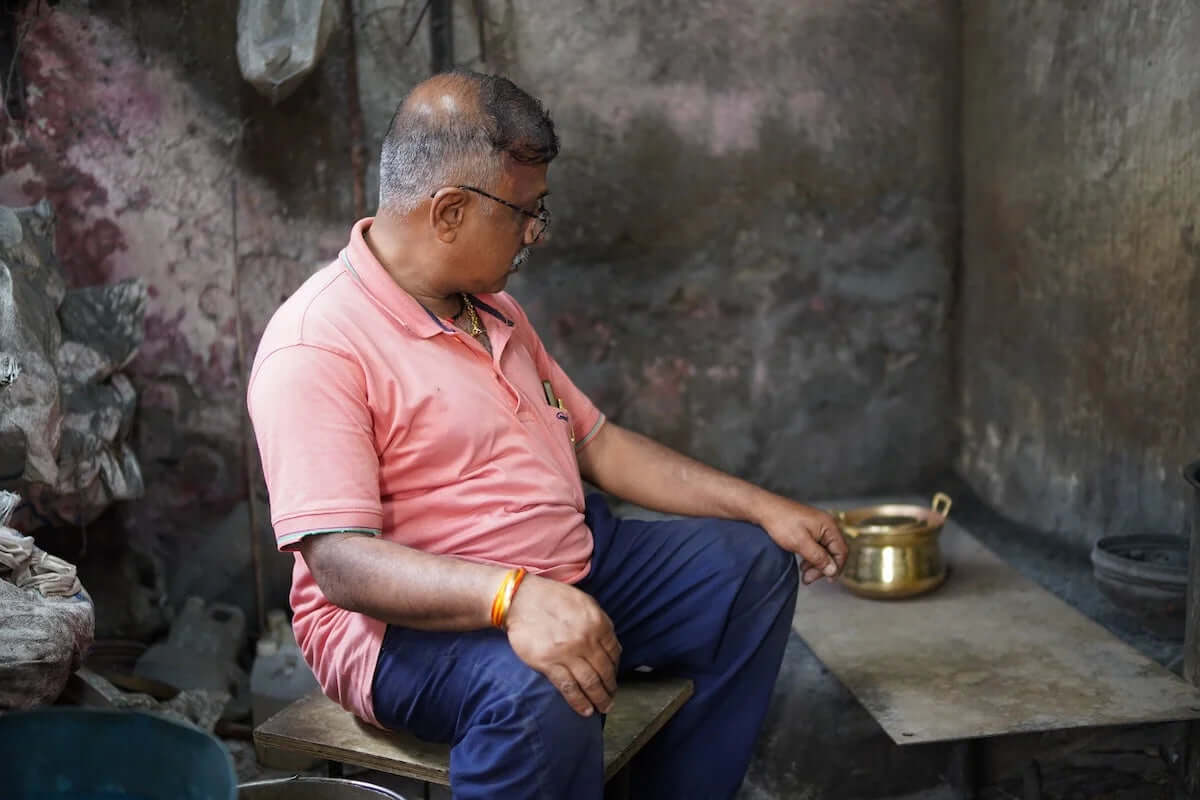




Shakuntala Brass Ghee Pot
Tax included. Shipping calculated at checkout
Shakuntala Patra: A Tradition Revived
The Shakuntala Brass Ghee Pot, traditionally known as Shakuntala Patra, is a beautifully handcrafted brass storage container used for...
SECURE PAYMENT OPTIONS
PRODUCT INFORMATION
Capacity (ML) | Weight (GM) | Diameter In CM | Height In CM |
|---|---|---|---|
350 | 220 | 10 | 6.7 |
DISCLAIMER
All our products are handcrafted and this results in each product being unique and slightly different from each other and therefore will have variations on dimensions & weight.---------------------------------------------------------
Shakuntala Patra: A Tradition Revived
The Shakuntala Brass Ghee Pot, traditionally known as Shakuntala Patra, is a beautifully handcrafted brass storage container used for storing and serving pure ghee in Maharashtrian households. This ghee pot combines tradition, utility, and craftsmanship in away modern containers cannot replicate.
Handcrafted by the artisans of Maharashtra, revived by Zishta to preserve its cultural and emotional significance, this ghee pot reflects a timeless tradition where families shared meals and rituals centered around ghee.
Product Highlights
- Material: Pure Brass (Pital) with Tin Coating (Kalai) in the interior.
- Design: Round, wide mouth with a slightly curved base, interior tin lining and a lid. Designed to be easy to handle, with a secure lid for protection from moisture and dust. The brass exterior provides longevity and charm, while the tin lining ensures your ghee remains pure, safe, and unaltered.
- Finish: A beautifully finished heritage storage container that enhances your kitchen and pooja room aesthetics.
- Usage: Storing and serving ghee.
- Care and Maintenance: Clean with mild cleaners. Avoid harsh, abrasive cleaning agents.
Why Choose a Brass Tope
- Artisan Craftsmanship - Handcrafted by the artisans of Maharashtra. preserving an age-old traditional design. A symbolic piece that connects daily rituals with deep-routed traditions.
- Health Benefits of Brass - Brass naturally enriches food with trace materials like zinc and copper, boosting immunity and wellness. Brass also helps maintain the natural warmth and consistency of ghee, keeping it aromatic and fresh. To know more benefits, read Key Benefits of Brassware.
- Regional Legacy - In the heart of every Maharashtrian household, traditions are not merely followed but cherished, embodying the essence of familial love and cultural heritage. Among these revered traditions is the Story of the Shakuntala Patra, a testament to the timeless bond that unites generations.
- Eco-Friendly and Durable - Compact, elegant and durable - perfect for daily use and as well as festive serving.
Frequently Asked Questions
1. Is the Shakuntala Brass Ghee Pot safe for storing hot ghee?
Yes, the tin lining makes it safe for storing warm ghee poured directly after preparation.
2. Will the brass exterior affect the taste of ghee?
No, the food-safe tin coating ensures the ghee’s natural flavour, aroma, and purity are maintained.
3. Is the design unique to Maharashtra artisans?
Yes, the signature curves and finishing are inspired by traditional Shakuntala Patra forms.
4. Is this product safe for everyday kitchen use?
Absolutely - tin lining ensures daily use without any reactivity concerns.
5. Does brass help in maintaining the consistency of ghee?
Yes, brass naturally supports temperature stability, keeping ghee smooth and usable.
Packaged and Marketed by:
Zishta Traditions Private Limited
Address: 25/1, 9th Cross, 19th A Main, JP Nagar 2nd Phase, Bangalore 560078
Contact: +919008220185 , support@zishta.com
Country of Origin: India

Frequently asked Queries
Get your queries answered fast!
Do brass cookware need Kalai
Yes. All brass cookware except those for storing water/making coffee need kalai to prevent adverse reaction with the acidic elements of the food cooked in them.
How frequently do you need to do Kalai?
Depending on usage, kalai has to be redone between 12-15 months.
What are the benefits of Cooking in Brass?
1. Preserves >90% of nutrition
2. Alkaline property of brass neutralises acidity and protects your gut health.
Which Cluster Crafts this Shakuntala Patra
This beautiful traditional vessel was revived working with the traditional cluster of Maharashtra - the tambat free hand beating on the vessel is a unique touch specific to this cluster.
Why buy from Zishta
Authentic handcrafted traditions making each piece unique adoring your modern home
Crafted by generational artisans with cherished history making every item a "Masterpiece"
One Stop Shop for all Traditions of Bharat
Zishta purpose is to connect you back to your roots!
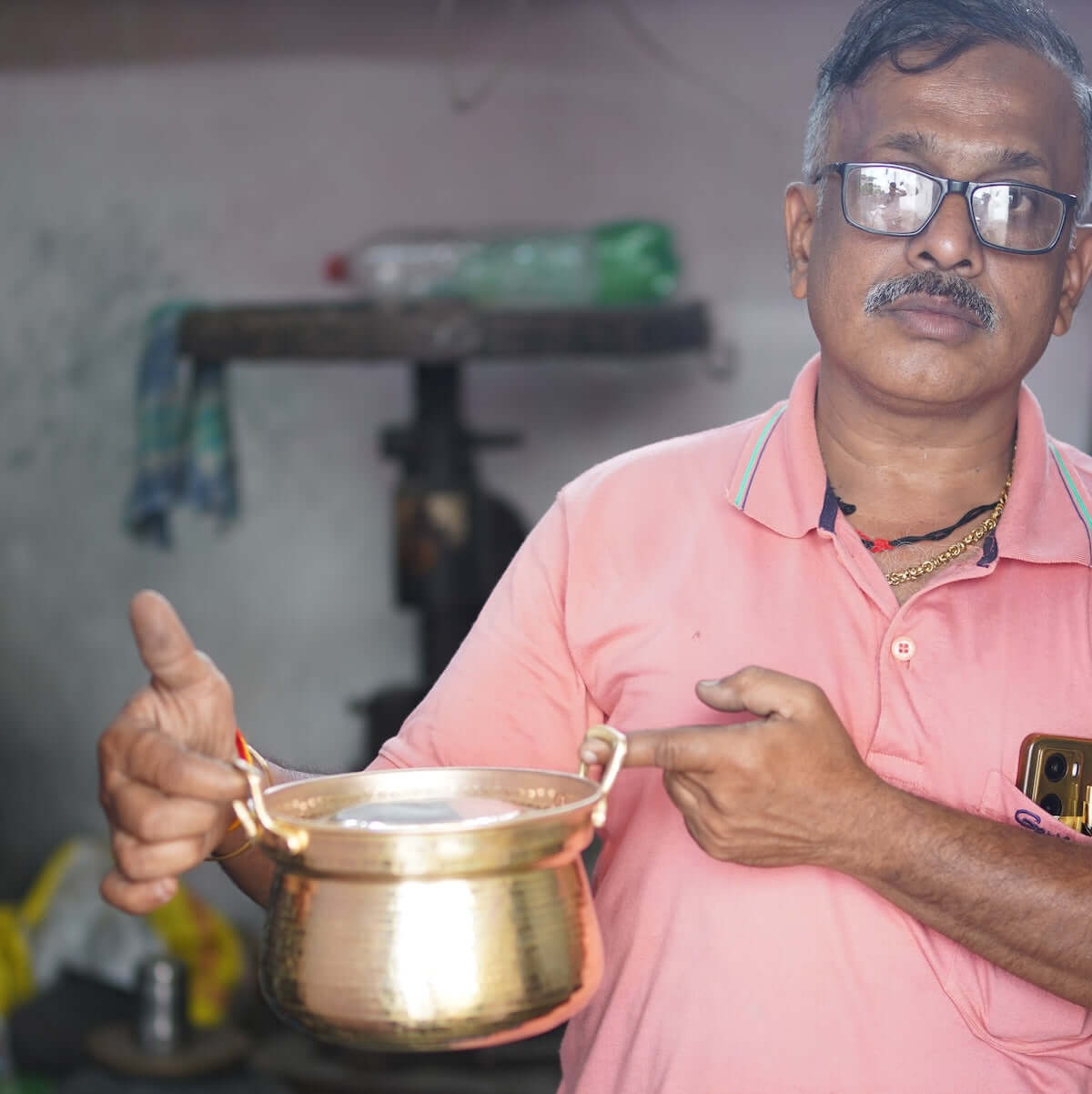
Shakuntala, the affectionate title bestowed upon the eldest daughter-in-law of the family, symbolizes respect, responsibility, and the nurturing spirit that she brings to her new home. The Shakuntala Patra, a beautifully crafted pot, shares its name with this esteemed family member. Traditionally used to serve ghee, an essential element in Maharashtrian cuisine, this pot holds a significant place in daily rituals and celebrations.
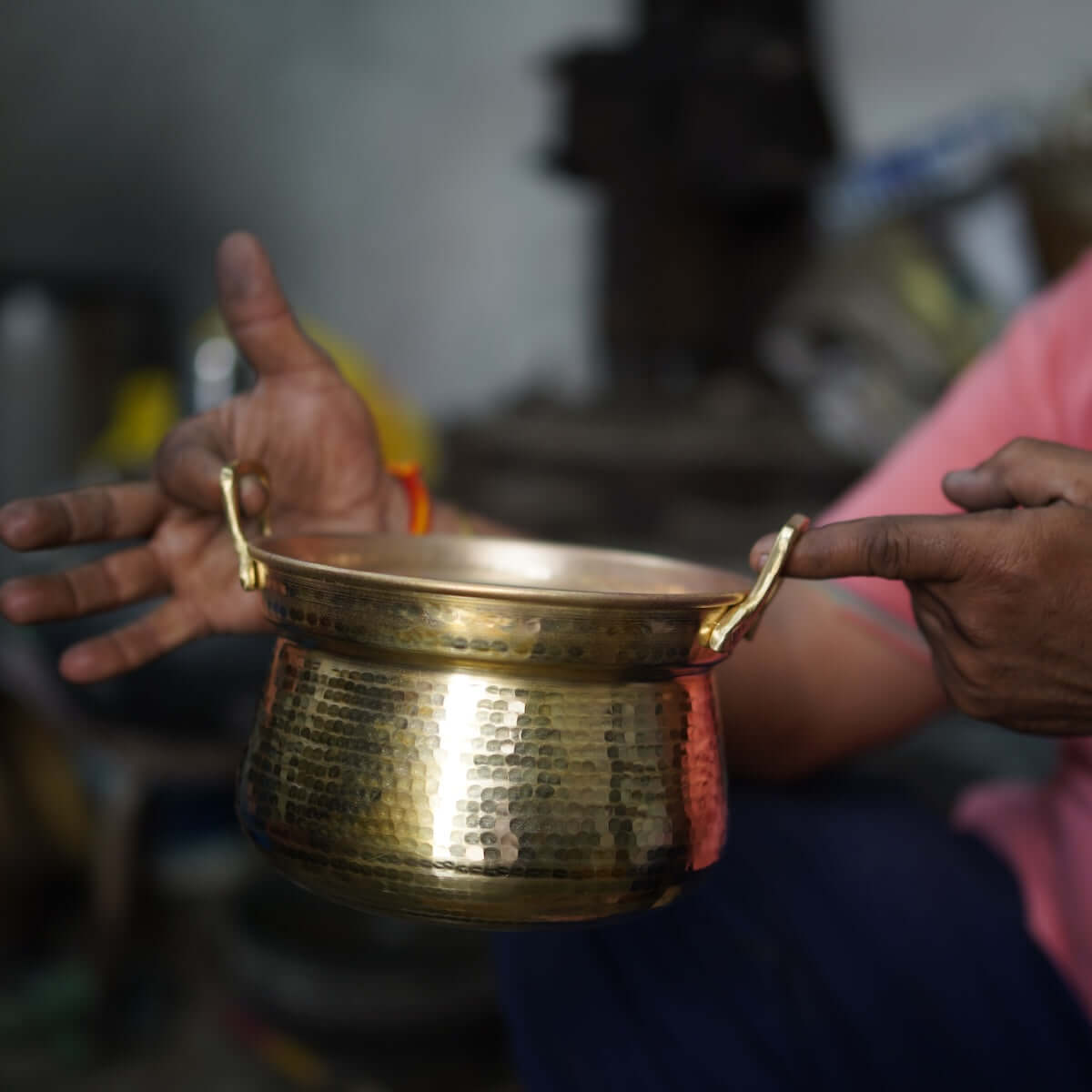
Over the centuries, the design of the Shakuntala Patra has evolved, mirroring the changes in society and lifestyle. From its origins as a simple vessel for ghee, it transformed into an elegant piece of craftsmanship. This cherished form of the Shakuntala Patra was believed to be lost to time – a design used specifically by the eldest daughter-in-law for making chai, an integral part of family bonding and hospitality.
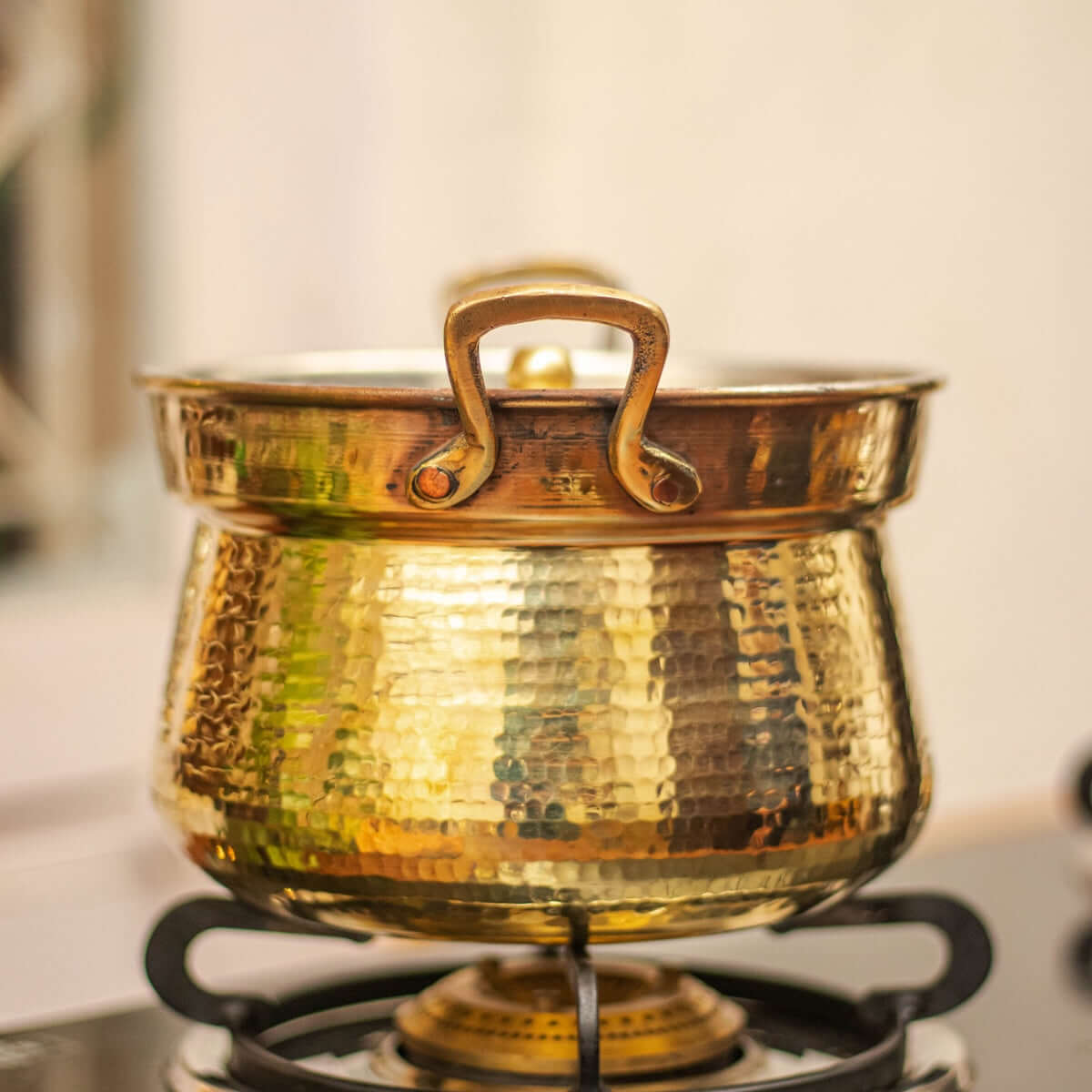
Today, the revival of the Shakuntala Patra is more than just the reintroduction of a beautiful artifact; it is the rekindling of a tradition steeped in cultural significance. This unique pot not only enhances the aesthetic appeal of modern kitchens but also reconnects families with their rich heritage. By bringing back the Shakuntala Patra, we celebrate the enduring values of love, unity, and the importance of family that it represents.
Shakuntala, the affectionate title bestowed upon the eldest daughter-in-law of the family, symbolizes respect, responsibility, and the nurturing spirit that she brings to her new home. The Shakuntala Patra, a beautifully crafted pot, shares its name with this esteemed family member. Traditionally used to serve ghee, an essential element in Maharashtrian cuisine, this pot holds a significant place in daily rituals and celebrations.
Over the centuries, the design of the Shakuntala Patra has evolved, mirroring the changes in society and lifestyle. From its origins as a simple vessel for ghee, it transformed into an elegant piece of craftsmanship. This cherished form of the Shakuntala Patra was believed to be lost to time – a design used specifically by the eldest daughter-in-law for making chai, an integral part of family bonding and hospitality.
Today, the revival of the Shakuntala Patra is more than just the reintroduction of a beautiful artifact; it is the rekindling of a tradition steeped in cultural significance. This unique pot not only enhances the aesthetic appeal of modern kitchens but also reconnects families with their rich heritage. By bringing back the Shakuntala Patra, we celebrate the enduring values of love, unity, and the importance of family that it represents.



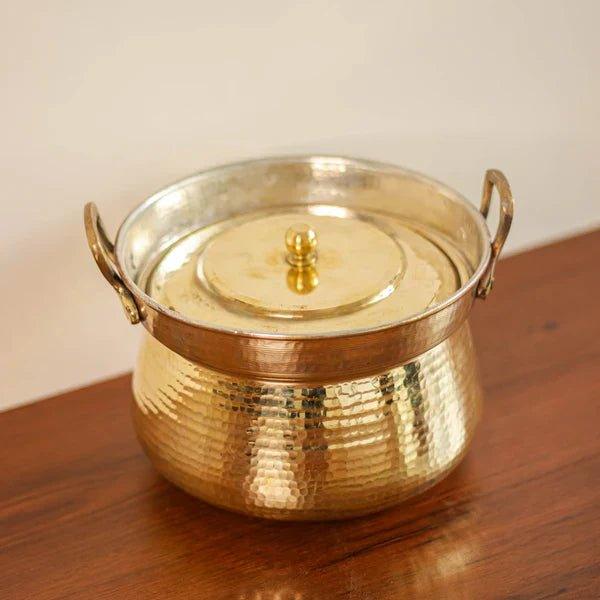
The Timeless Elegance of Shakuntala Patra: Reviving a Cherished Tradition
Explore the rich heritage of Shakuntala Patra, exquisite brass cookware known for its durability and elegance. Uncover the artistry behind these timeless brass pots and learn how they can elevate y...
Bodha our Blog
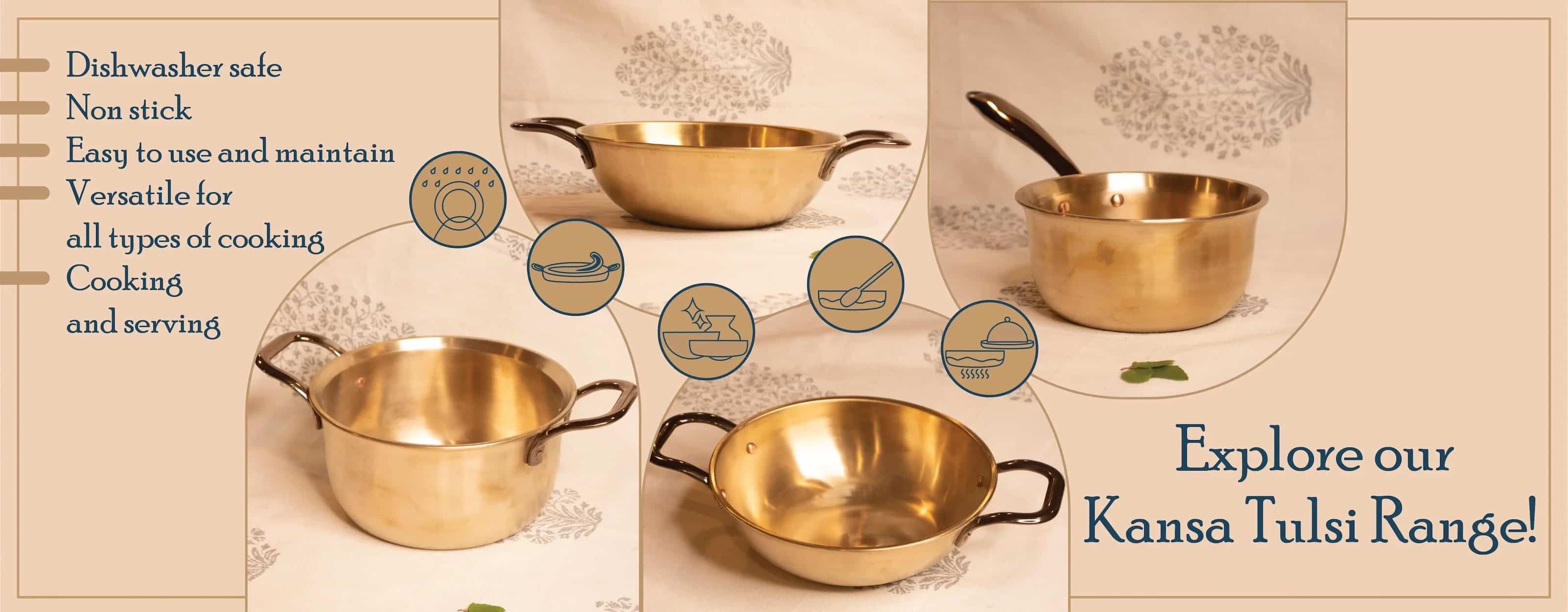
Zishta Kansa Cookware (Bronze Utensils)
Congrats on your journey to imbibe traditional wisdom to your home. Zishta is glad to be a part of this journey and support you with authentic traditional knowledge gathered through our journeys, d...
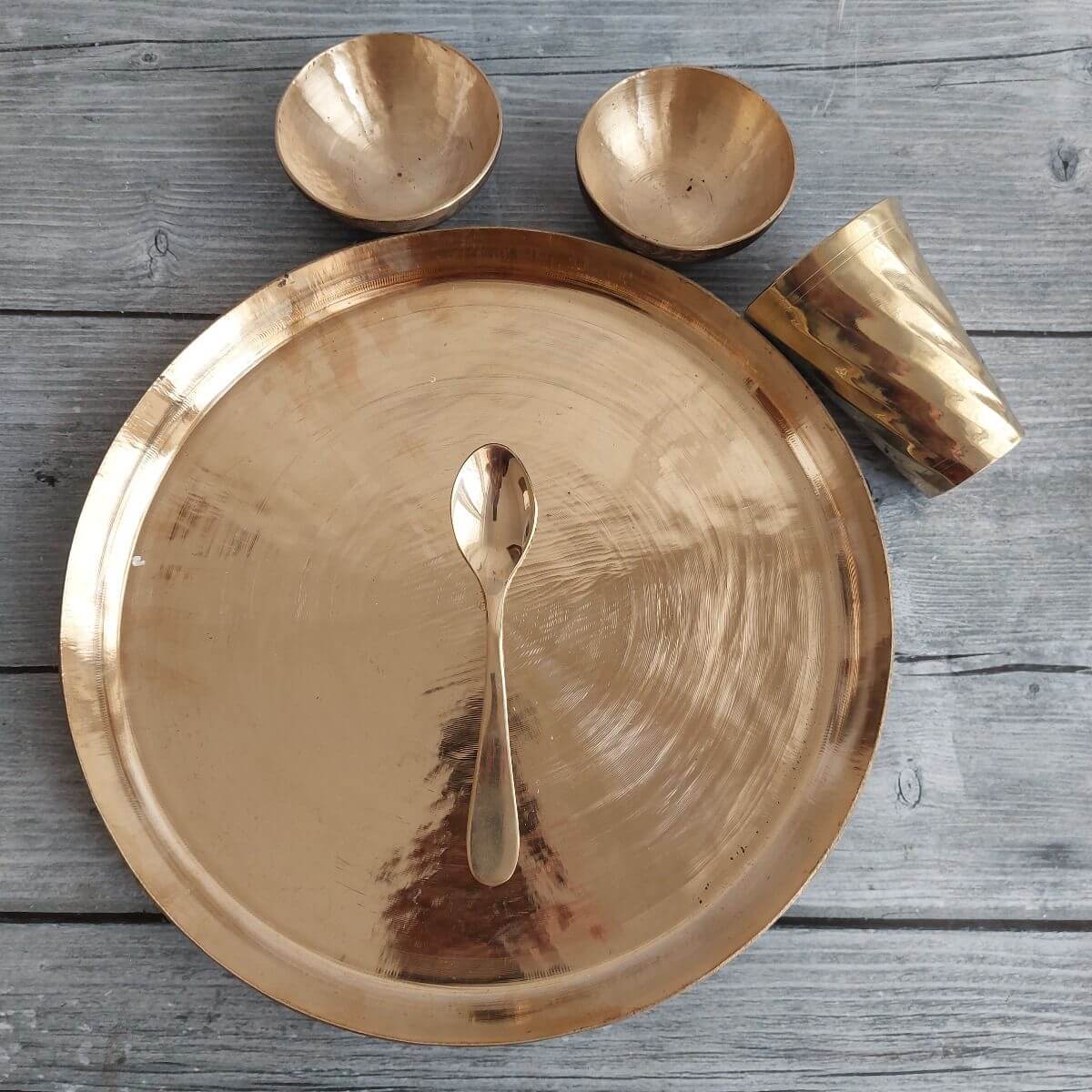
The Journey of a Kansa Thali: From Artisanʼs Workshop to Your Dining Table
Explore the journey of a handcrafted Kansa Thali, from the artisan’s skilled hands to your dining table. Discover its rich heritage, health benefits, and timeless charm that make Kansa dinnerware a...

Heritage in Your Hands: Meet the Thatheras of Punjab – Masters of Brass Craftsmanship
Meet the Thatheras of Punjab, master artisans preserving India’s ancient brass and copper craftsmanship. Explore their timeless techniques and handcrafted creations that bring authentic heritage an...

